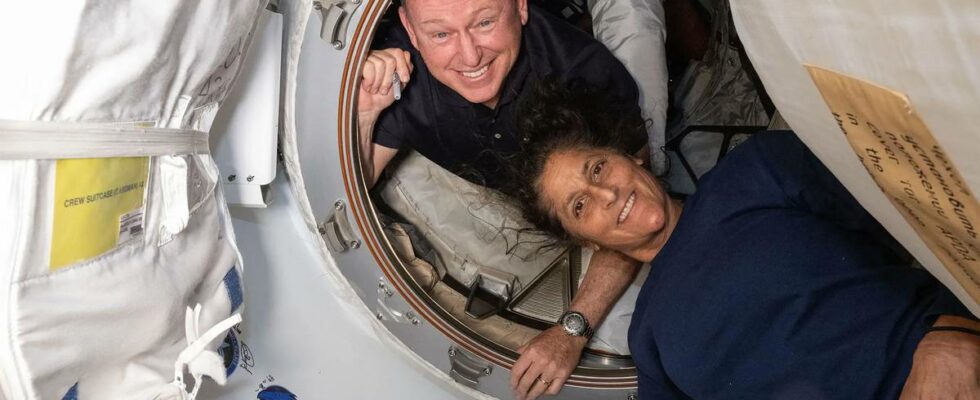When the two American astronauts Barry “Butch” Wilmore (61) and Sunita “Suni” Williams (58) were sent out on a mission in June, they expected to be back home within a few days. But things didn’t quite go according to plan. Almost two months later, they are still hovering high above the earth inside the International Space Station (ISS). The duo – who are stuck indefinitely – have so far missed the entire summer, and will most likely have to celebrate both Christmas and New Year in the room. The photo shows the Boeing Starliner spacecraft, with astronauts Butch Wilmore and Suni Williams on board, approaching the International Space Station on 6 June. Photo: Nasa Tested new vessel Nasa astronauts Wilmore and Williams were sent out in a Boeing Starliner spacecraft on Wednesday 5 June. It was the first flight of its kind with humans on board, and was a so-called “demonstration mission” to see how the new spacecraft performs before it is used more regularly. But problems arose as the craft approached the International Space Station, which orbits at an orbital altitude of about 400 km from Earth. The problems included leaks in the propulsion system and some attitude control motors that stopped working. So even if the astronauts made it safely to the space station, they will need an alternative means of transportation to get back home. From a window on the SpaceX Dragon Endeavour, one can see Boeing’s Starliner spacecraft. Photo: Nasa At a press briefing on Wednesday, Nasa officials said no decisions had been made on next steps. “Our primary option is to return Butch and Suni on the Starliner,” said Steve Stich, head of NASA’s Commercial Crew Program. But Nasa is now considering an alternative solution for Wilmore and Williams, which involves attaching them to another mission. NASA astronauts Suni Williams and Butch Wilmore pose together for a photo on their way to the launch pad at Space Launch Complex 41 in Cape Canaveral, Florida, Wednesday, June 5, 2024. Photo: Chris O’Meara/AP Possible return trip in February The mission, which is scheduled for launch in September, could potentially bring the astronauts back to Earth in February next year. The journey will take place with a SpaceX Crew Dragon spacecraft, which was originally supposed to have four crew members on board. But now two seats may remain vacant to make room for Wilmore and Williams. That plan would mean the astronauts would spend more than eight months — instead of eight days — aboard the ISS. This is the third stint aboard the space station for Williams, a retired Navy helicopter pilot, while Wilmore is a former fighter pilot who has been in space twice before. Williams says the return to the ISS has felt like coming home again. – It feels good to float around. It feels good to be in space and working up here with the ISS team, she told reporters during a recent briefing call. The astronauts were ecstatic when they arrived at the International Space Station on June 6. A unique opportunity The fact that the two astronauts are now spending more time in space than initially planned has certainly had its advantages. The unexpected extension of the stay on the ISS gives the astronauts a unique opportunity to further contribute to scientific experiments and maintenance of the station, according to Nasa. – We have been thoroughly busy up here, and were integrated right into the crew, said Williams. Williams and Wilmore pose with flight engineers Mike Barratt and Tracy Dyson aboard the International Space Station. Photo: Nasa But it also places demands on their mental and physical endurance, as life in microgravity over a long period of time can have significant effects on the human body. Although the astronauts will spend much more time in space than they originally planned, others have spent much longer periods above the Earth’s surface. Russian Valeri Polyakov spent 437 days in space aboard the Mir space station in the mid-1990s. Last year, Frank Rubio returned from the ISS after 371 days, the longest time an American has spent in space. Published 11.08.2024, at 09.53 Updated 11.08.2024, at 19.02
ttn-69
Astronauts on a trip for eight days may be stuck until 2025 – news Urix – Foreign news and documentaries

